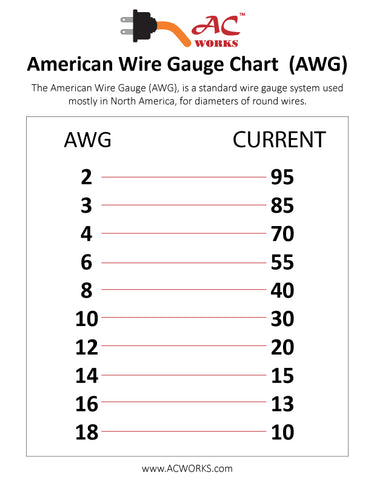
Thin wire such as 20AWG or 22AWG isn’t very common but occasionally can be useful for lower power speakers. The gauges available range from about 20 gauge to 10 gauge, with 18 gauge being one the most popular. Most speaker wire sold today is made up of two conductors attached as a pair with one marked as the positive they’re essentially the same as stranded power cable paired together. By comparison, thicker speaker wire has low resistance and therefore less power lost across it at high power levels or a long cable run. Higher amps require a larger conductor size (thick wire) just like for power wire. This can make a difference in the wire size you need based on the length and power carried to audio speakers. When an amplifier supplies an audio signal with a given voltage output, speakers with a lower impedance draw more electrical current (higher amps) than higher impedance speakers. Speaker impedance and power vs the correct gauge wire Likewise, a larger number is used for smaller wires with fewer conductors. The AWG wire chart uses a numbering system in which thicker cable has a smaller number. Likewise, each AWG wire gauge has an electrical current capacity (how many amps it can handle, also called ampacity sometimes). It specifies sizes, each with a given circular area of the electrical conductor size, its resistance per foot or meter, and some other specifications. Less commonly known as the Brown and Sharpe wire chart, the American Wire Gauge chart has been around since 1857. Speaker wire doesn’t have just one size (gauge) – it’s standardized and based on the American Wire Gauge (AWG) chart which lists standard sizes using a number. What gauge is speaker wire? (Wire size and wire gauge explained) It is true, however, that real copper wire is better than copper coated aluminum wire as I explain later. The electrical signal will not have any measurable difference at the speaker end. As long as you’re using a good quality wire with the correct gauge you’ll be fine. It’s a great marketing feature for retailers but the data shows that there’s an amazingly small difference in performance. It’s not worth spending more money on it.
#WIRE SIZE CHART FREE#
No, oxygen free pure copper wire will not deliver any noticeable improvements in sound or power.
#WIRE SIZE CHART FULL#
Tips on using smaller speaker wire and saving moneyĪs real copper wire is more expensive these days and because most people don’t drive speakers at full power, here are some tips to keep costs down: To avoid this when moving from a shorter wire length, we can pick a speaker cable 2 sizes up: 18 AWG -> 16 AWG -> 14 AWG. You can play around with different power amounts, lengths, and speaker Ohms to find the best speaker wire gauge for your audio setup and avoid spending more money than necessary.Įxample: 18AWG wire will lose about 4 watts at maximum power if it’s 50ft long. This is different from the speaker wire size chart section below that provides lengths based on the speaker Ohms only and doesn’t need power ratings. My speaker wire gauge calculator will recommend the right speaker wire gauge based on the power, speaker Ohms, and the specific length you need. However, I’ve made it easy for you: You can use my speaker wire size calculator or speaker wire size chart sections provided below. The cable length needed for your speaker system.The speaker’s impedance (Ohms) rating – also called the nominal impedance.Your stereo or amplifier’s power output.The correct gauge speaker wire you need is based on 3 things:
#WIRE SIZE CHART HOW TO#
How to find the correct size wire for ANY length or speaker system It’s a good compromise between price and power handling as it’s usually affordable and easy to find. In most cases for everyday listening at medium or low power levels (50W RMS or under), 18 gauge (18AWG) wire is what you need. Long (100ft+) speaker runs or higher power applications such as high-power 2 or 4 ohm subwoofers with a short length. Moderate power subwoofers (under 225W) with short lengths. Longer speaker runs for car & home stereo speakers or short runs under 20 ft for 75-100W.

Car and home speakers up to 25 ft with average power levels (50W RMS and below).


 0 kommentar(er)
0 kommentar(er)
